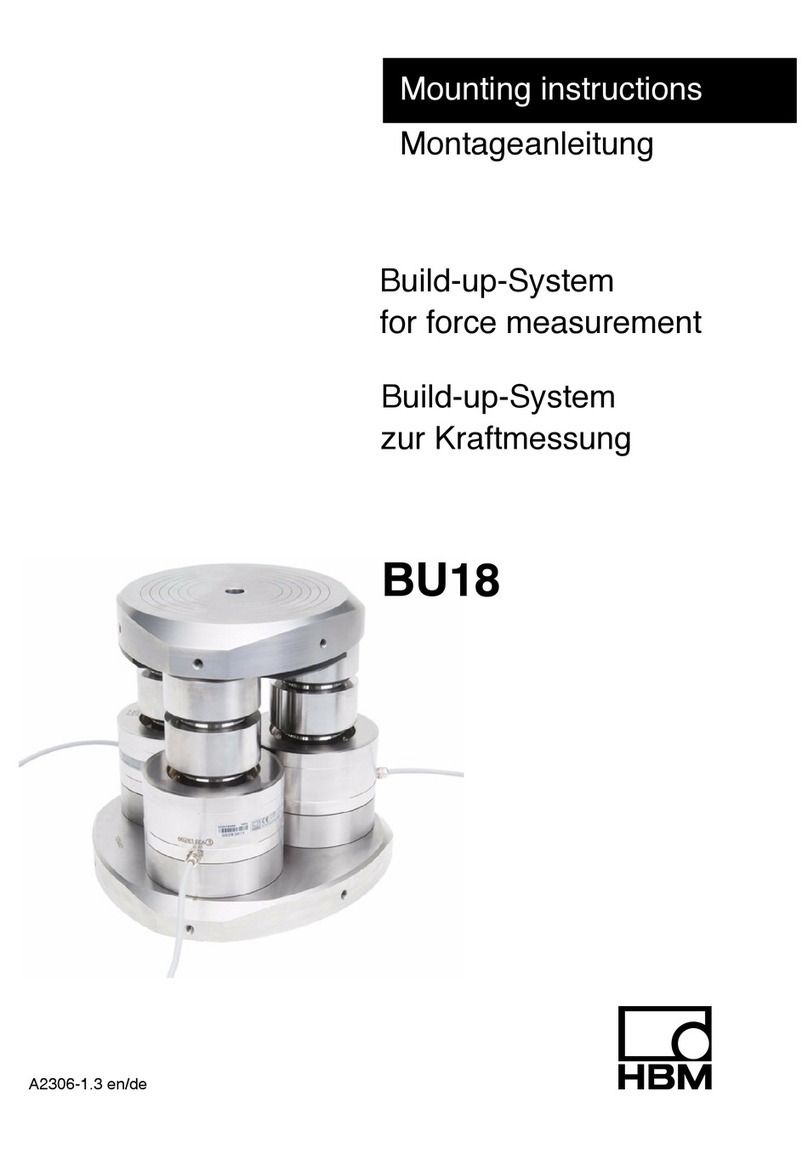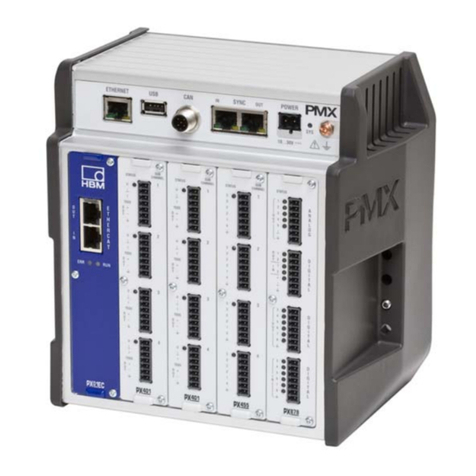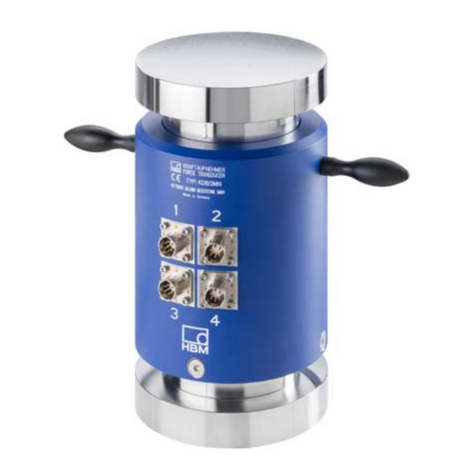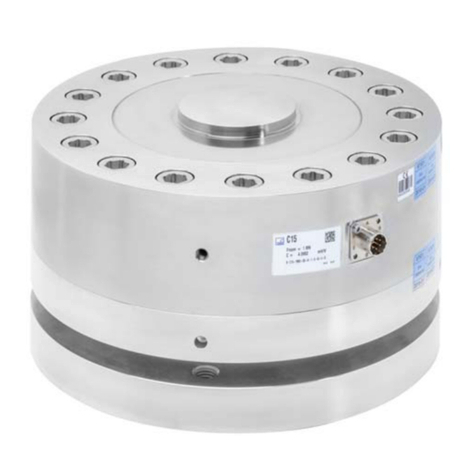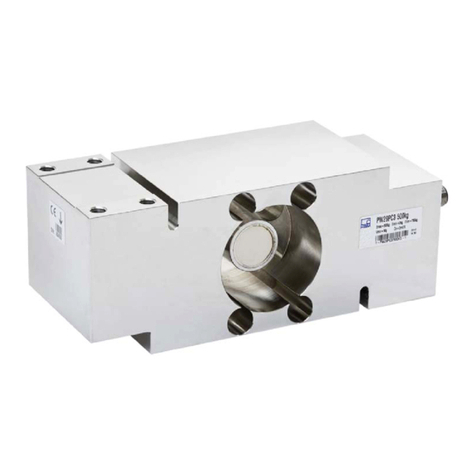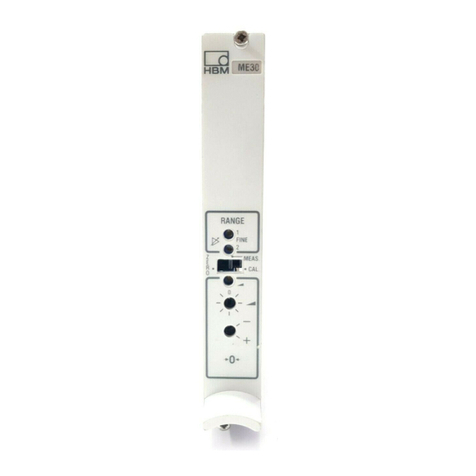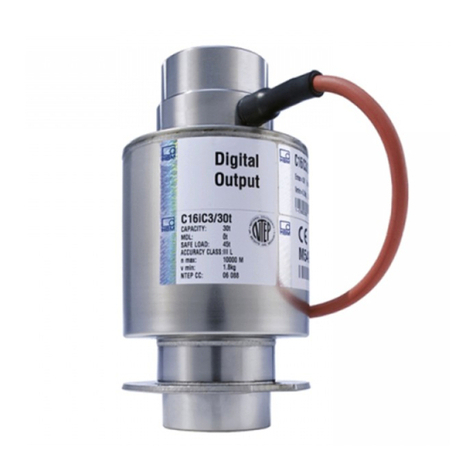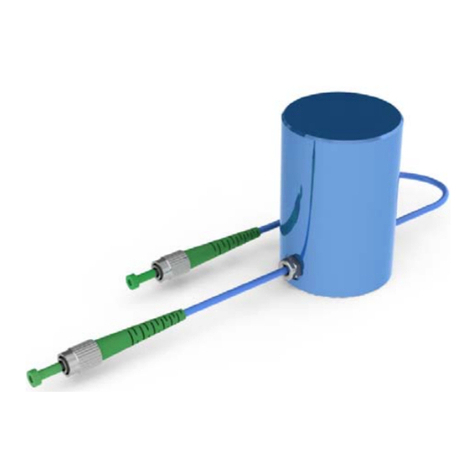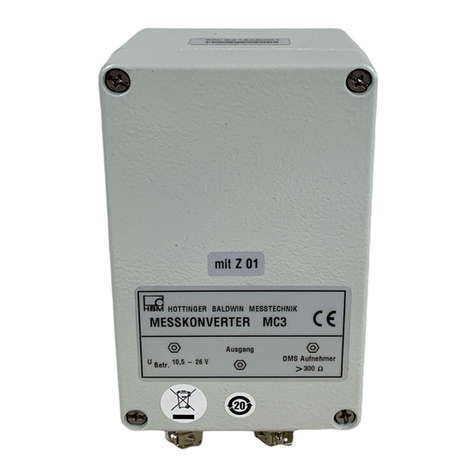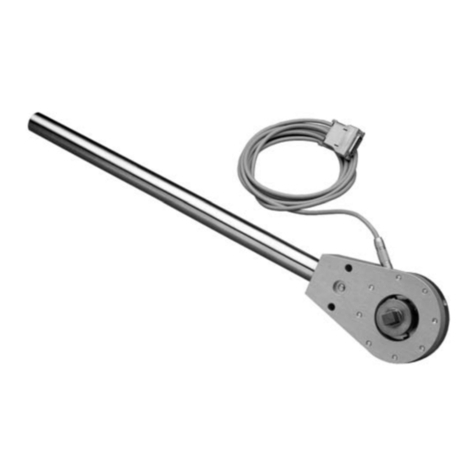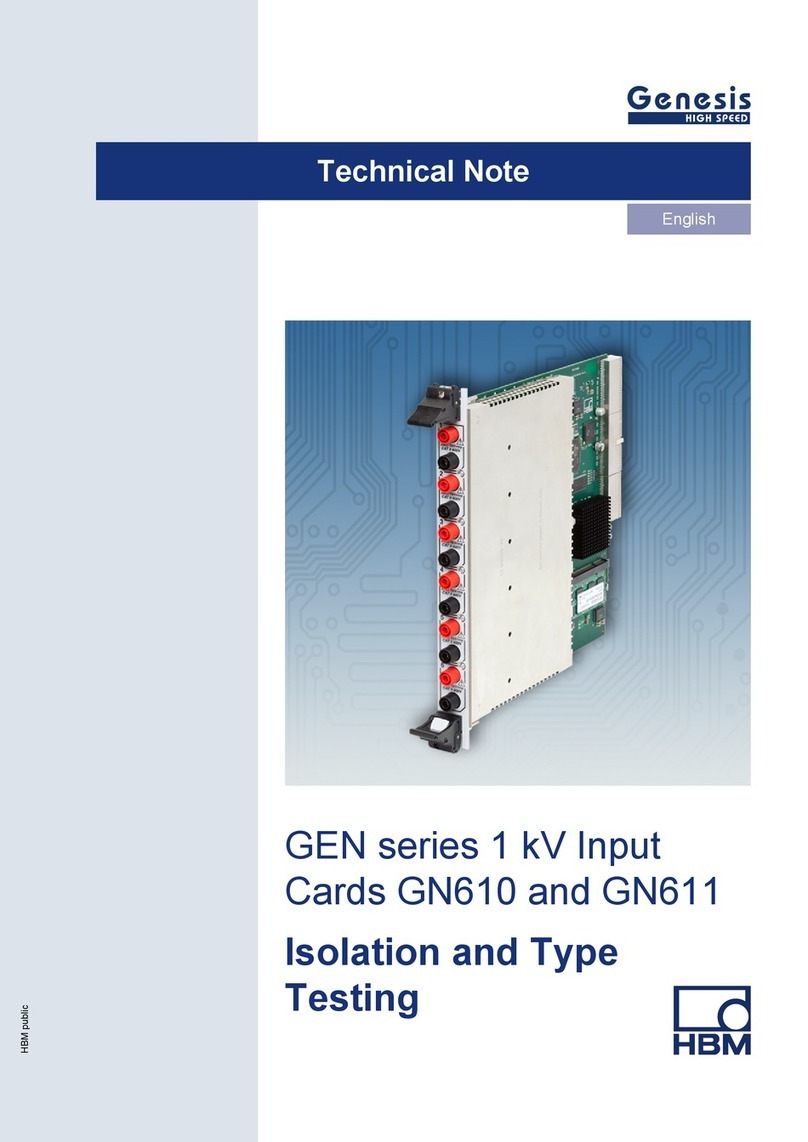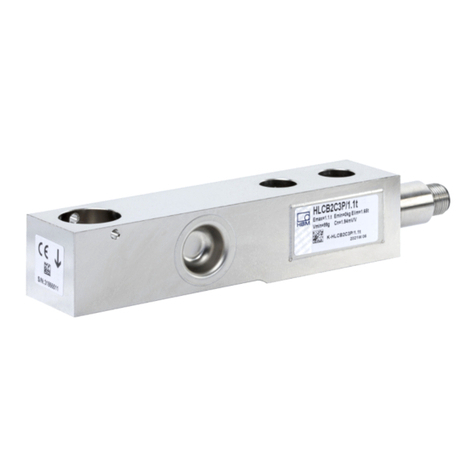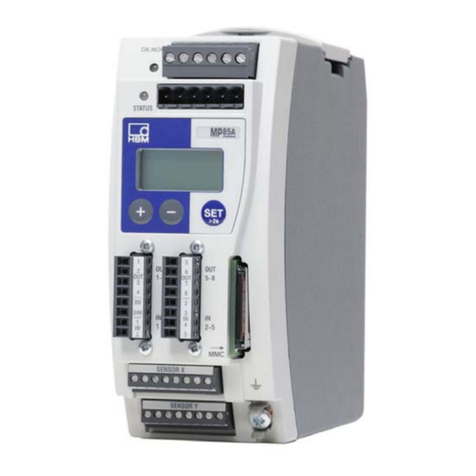
Safety instructions
4A02529_04_YCI_00 HBM: public CFT
Use as machine elements
Force transducers can be used as machine elements. The "Load-carrying
capacity limits" section and the specifications to ensure the required overload
limit of your application must also be observed.
Accident prevention
The prevailing accident prevention regulations stipulated by the trade associa
tions must be taken into account, even though the breaking force is well in ex
cess of the full scale value.
Additional safety precautions
Force transducers cannot (as passive transducers) implement any (safety-rele
vant) cutoffs. This requires additional components and constructive measures,
for which the installer and operator of the plant is responsible.
In cases where a breakage or malfunction of the force transducer would cause
injury to persons or damage to equipment, the user must take appropriate
additional safety precautions that meet at least the applicable safety and acci
dent prevention regulations (e.g. automatic emergency shutdown, overload
protection, catch straps or chains, or other fall protection).
The electronic processor that processes the measurement signal should be
designed so that failure of the measurement signal cannot lead to secondary
failures.
General dangers when failing to follow the safety instructions
Force transducers are state-of-the-art and failsafe. Transducers can give rise
to residual dangers if they are mounted, installed, used and operated in
appropriately or by untrained personnel. Every person involved with setting up,
starting up, operating or repairing a force transducer must have read and un
derstood the mounting instructions and in particular the technical safety in
structions. Force transducers can be damaged or destroyed by non-designated
use of the force transducer or by non-compliance with the mounting and oper
ating manual, these safety instructions or other applicable safety regulations
when using the force transducers. A force transducer can break, particularly if
it is overloaded. The breakage of a force transducer can cause damage to
property or injury to persons in the vicinity of the force transducer.












